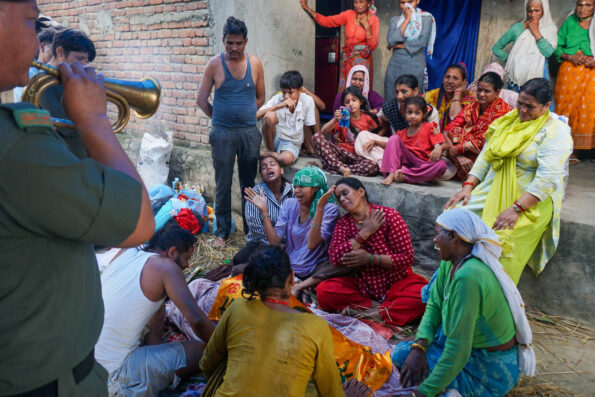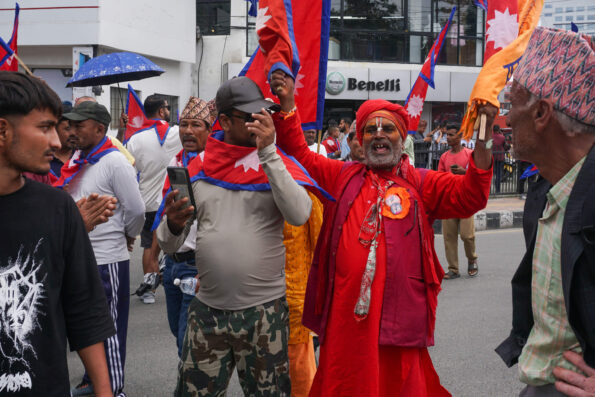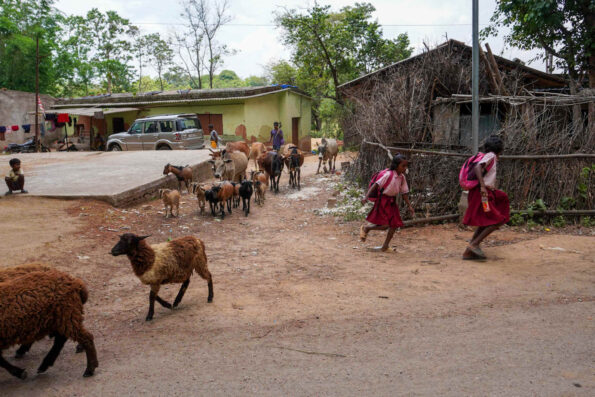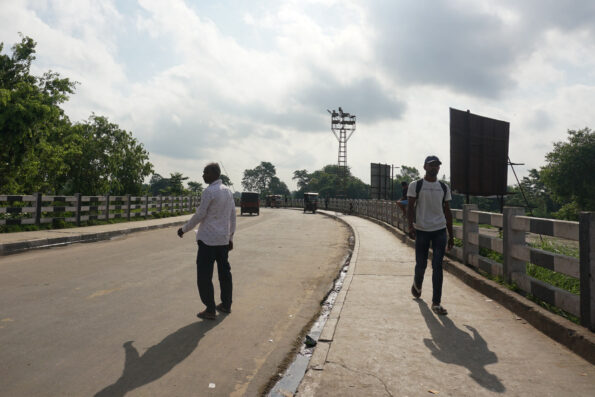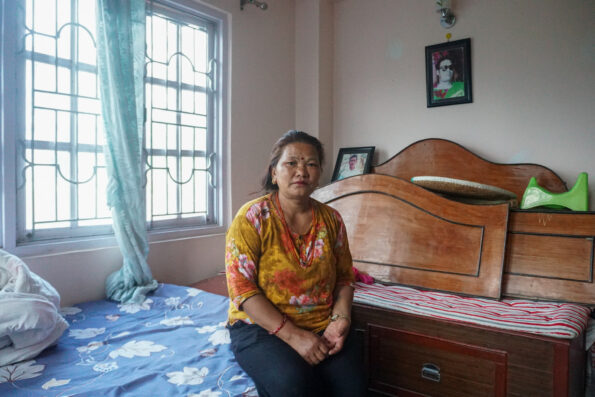
Sunita Neupane, GPJ Nepal
Boys tend to a garden inside a juvenile correction home in Bhaktapur. Despite overcrowded conditions and limited space, activities like sports and gardening offer detainees a rare sense of relief and recreation in a system struggling to provide proper rehabilitation.
BHAKTAPUR, NEPAL — Between the cracked floors and peeling walls of a juvenile correction home, 21-year-old Khan finds refuge in a storybook. Seventeen others crowd around him in the 12-by-16-foot room that was designed for half that number of people. The stench from nearby toilets hangs in the air.
Khan, who requested only his last name be used for fear of reprisals, is accused of raping someone he says he was in a relationship with. Since he was 16, he’s lived behind razor wire in a place that should have offered rehabilitation rather than prison time alone. But there was no juvenile court when he was sentenced to 19 years in confinement — a punishment that violates a United Nations Convention on the Rights of the Child requirement that detention of minors be used only as a measure of last resort and for the shortest appropriate period. Nepal is a signatory to that convention.
Khan’s sentence was later reduced to 13 years because he was under age 18, but even that shortened sentenced meant that he would live as an adult in a juvenile detention facility, housed with children.
Khan’s situation is due to Nepal’s 2018 Act Relating to Children, which raised the legal definition of a minor to anyone under age 18 — inadvertently overwhelming Nepal’s juvenile detention system. Nepal’s Supreme Court mandated a year ago that a juvenile court be established, but that hasn’t happened yet.
Sangam Chalise, program coordinator at Underprivileged Children’s Educational Programs of Nepal, a nongovernmental organization, says the 2018 change quintupled the juvenile detention population.



More than 600 people who entered the system as children are now adults, making up nearly half the detainees across nine juvenile corrections homes. In some cases, 13-year-old children share space with 26-year-old adults, even though the law explicitly forbids housing minors with adult prisoners. All nine juvenile facilities operate at two to four times their intended capacity, breeding violence, escape attempts and even death.
While global standards around juvenile reform emphasize restorative justice, Nepal’s system prolongs punishment, critics say.
At 16, Majhi, who requested only her first name be used for fear of stigma, entered the detention system because she was found guilty of killing her grandmother. Now 19, she faces 14 more years in an overcrowded juvenile center. Once aspiring to be a police inspector, she now shares cramped quarters with 12 girls, and says she sometimes endures beatings from adult prisoners.
“It’s very difficult to live here,” she says.



Officially, Nepal’s juvenile justice system prioritizes rehabilitation over punishment, acknowledging adolescents’ incomplete mental development and unique needs.
But regular courts process children’s cases without taking into account those children’s unique circumstances, says Rabindra Bhattarai, a lawyer with Kathmandu-based Legal Aid Association, who mostly takes up child rights cases. And research indicates around 18% of children in juvenile detention centers experience suicidal thoughts, in a system where many districts lack psychologists and other experts.
“Society craves revenge and believes in suffering as punishment, but this approach fundamentally contradicts child development principles,” says child rights expert Tarak Dhital.
The government cites lack of budget as the main obstacle to fixing the system. But it hopes to establish a juvenile court this year, says Dipak Dhakal, undersecretary at the Ministry of Women, Children and Senior Citizens.



Meanwhile, Khan’s mother, who lives in the family’s village, tells neighbors that her son is studying in the city. It’s a fragile fiction to protect his future.
Khan says that if the truth comes out, the people in his old neighborhood will be unforgiving.
“The villagers will not see me as the boy who played football in their fields,” he says. “They will label me. I don’t want to be defined by my mistakes.”
Sunita Neupane is a Global Press Journal reporter-in-residence based in Nepal.


